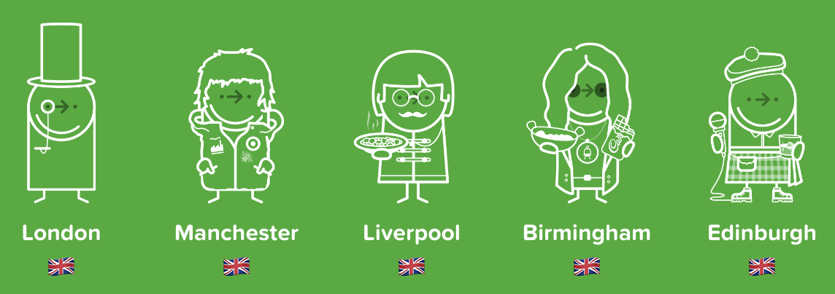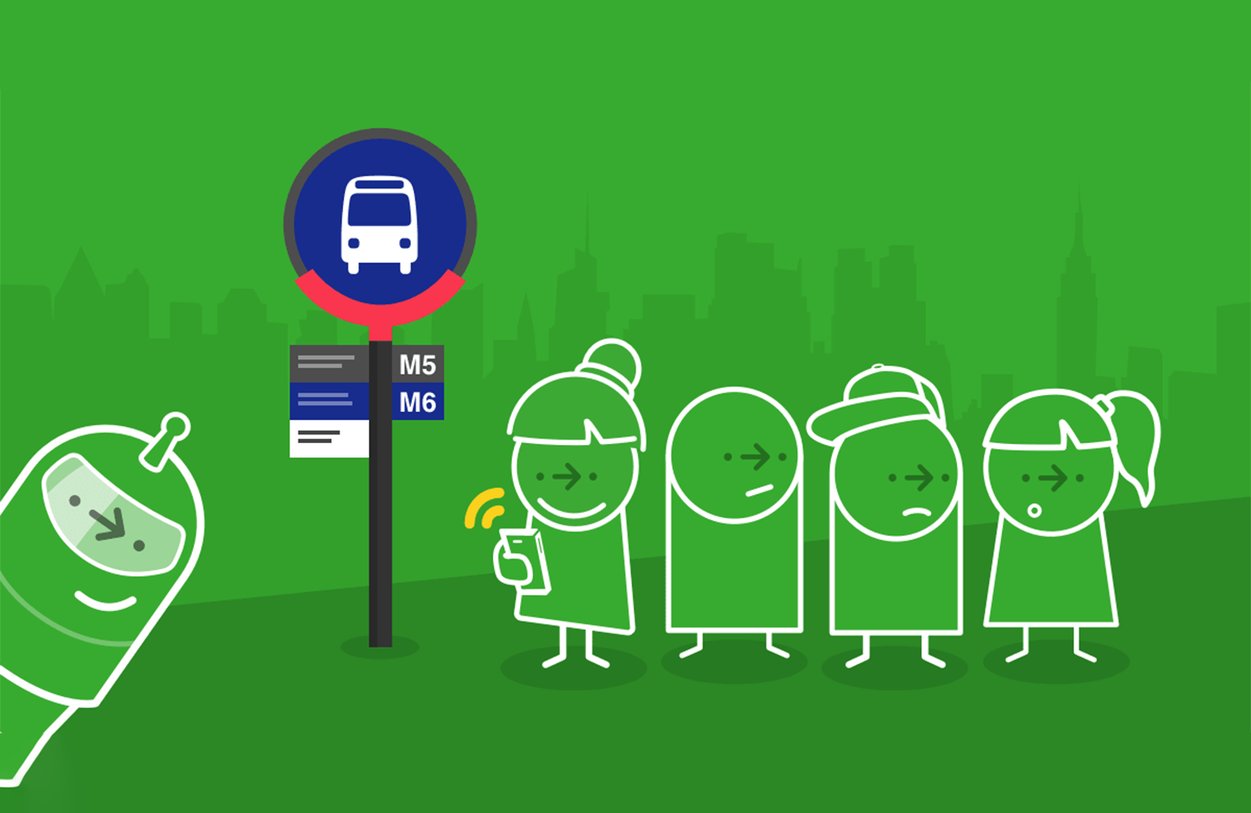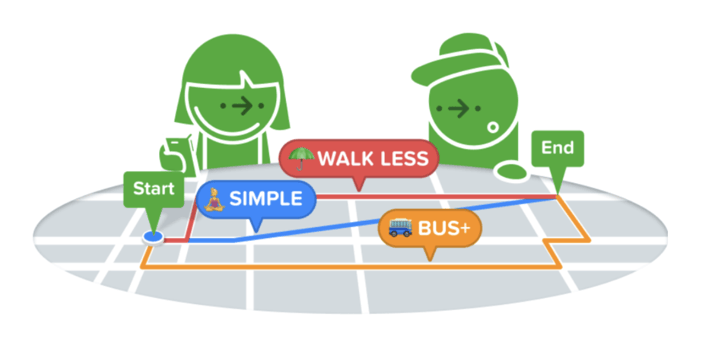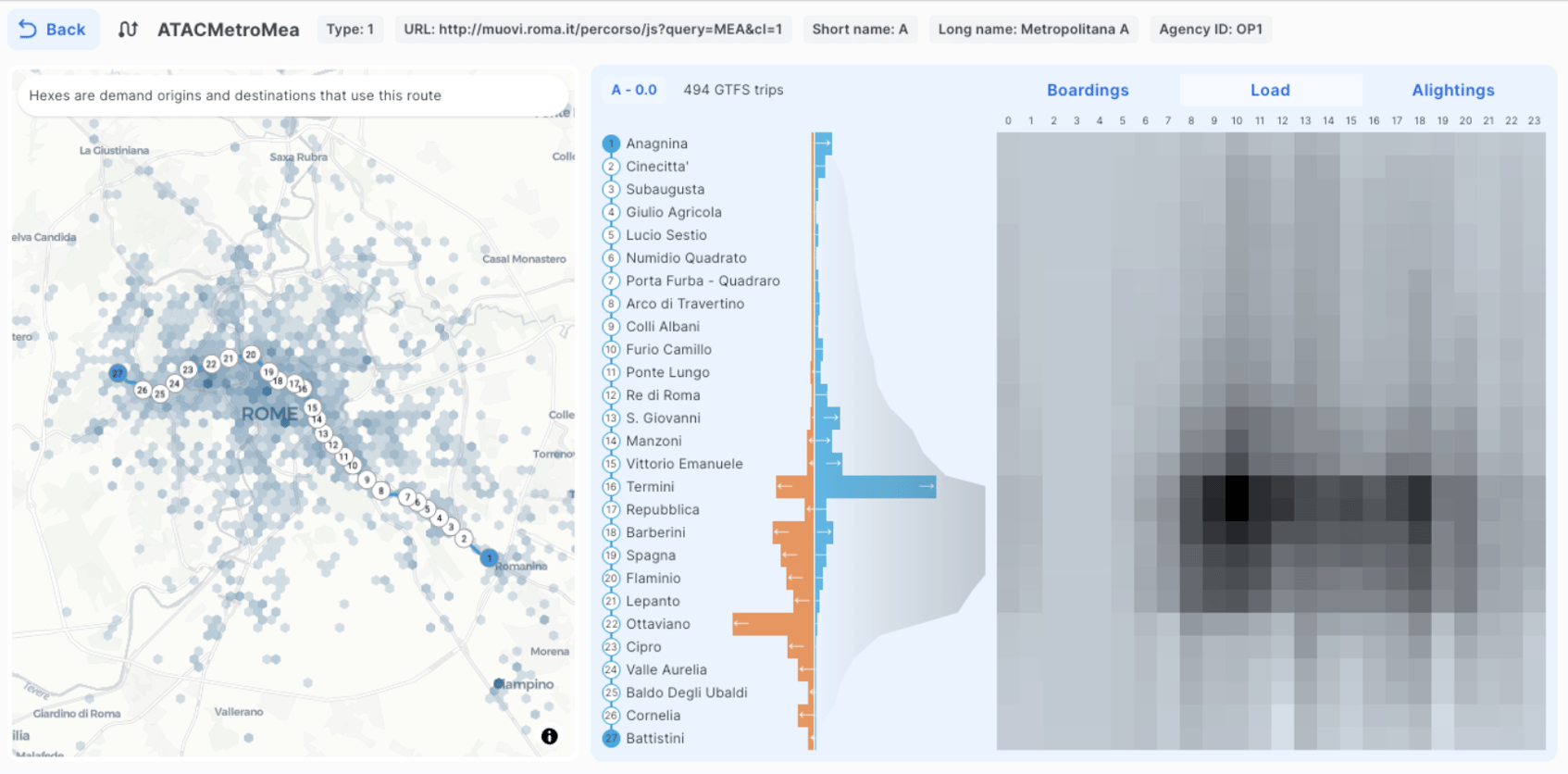As the movement for mobility-as-a-service (MaaS) grows, bolstered by recent launches around the world in Belgium, Italy, and Maryland, its rallying cry has only gotten clearer: MaaS is a critical strategy for reducing car-reliance. Making public and active transport as simple and easy as hopping in a car will draw more people onto buses, trains, and bikes — improving city congestion, reducing GHG emissions, and creating a mandate for future transport investment. Though the success of MaaS depends, in part, on the strength of the transport network it helps users navigate, MaaS can also be the catalyst for the virtuous cycle of patronage and growth we all hope for the future of transport.
We know what MaaS should do. But how should it be implemented? Transport authorities often assume that custom development is the best way forward. But high-profile MaaS failures (even in transport-rich cities like Singapore) have shown that homegrown, custom-developed apps can fail to take hold with the public.
At Via, we’ve built a new solution, called Citymapper for Cities, that marks a groundbreaking entry in the MaaS arena: a beloved consumer journey-planning app placed, for the first time, in the hands of transport authorities to deliver top-quality routing, passenger communications, and powerful back-end data and analytics. With the problem of car-dependence growing ever more pressing, Citymapper for Cities is a more effective MaaS solution that also happens to be easier, faster, and more cost-effective to launch.
- 🗺️ Want to back up and learn more about Citymapper for cities? Click here.
- 🚌 Want to dig deeper into why passengers love Citymapper? Click here.
How does Citymapper for Cities outperform custom-developed MaaS apps? We’re glad you asked.
An app that keeps pace with local users.
Transport authorities are the experts on their local regions: they know where transport is strong, where it could be better, which modes passengers prefer at which times of day, which buses tend to run late. But translating this knowledge into a set of product features, and getting passengers to actually use the resulting app, is more challenging than many authorities realise.
Citymapper’s award-winning interface is built out of the usage data and feedback from 50M+ worldwide users. There is simply no amount of debugging and focus group testing that can get a custom-built app — or even a freshly-configured and white-labeled one — to Citymapper’s consumer-grade level of user experience.
We also know how to market MaaS to passengers and keep them coming back with features like personalised journeys (the app learns from individual and city-level route preferences) and situational interfaces (the “get me home” button grows large and prominent late at night).
Most critically, Citymapper for Cities will continue to evolve after launch. A custom-developed app requires transport authority direction — and often additional cost — to update as the transport network grows and user expectations change. Citymapper is built by a team equally enthusiastic about technology and transport, and familiar with the demands for continual innovation placed on consumer-grade apps. Updates pushed biweekly reflect feedback from users around the world, letting transport authorities tap into global insights and experience at a local scale.
Accurate, localised routing gets people where they need to go.
A compelling, easy-to-use interface means little without the meat of a MaaS app: comprehensive journey-planning that reflects up-to-date information on local transport modes. Though authorities often view app localisation as the chief benefit of custom development, meaningful localisation can actually be better achieved with an experienced, global consumer-focused team.
Citymapper for Cities does include some degree of localised branding: for example, every city or region gets its own custom “Greenie,” and sponsoring transport authority logos appear in-app. Fun local details — like figuring calories burned while walking in terms local favorite beverages — make passengers feel welcome.

But where the app truly shines is in its highly-localised transport data and passenger communications. Perhaps counterintuitively, Citymapper’s ability to deliver the best local routing advice is rooted in the app’s global footprint: the app’s team have developed a set of powerful tools and replicable processes to source, clean, and maintain data feeds that are flexible enough to deploy in every city. Passengers stay up-to-date with a combination of automated and authority-initiated messaging about service changes, disruptions, and emergencies.
Citymapper’s tools come in handy when the team manages service disruptions — like a transport strike or a Taylor Swift concert — but also means that everyday data is more accurate as well. For example, the data feeds produced by the Madrid-area Interurbanos bus network are incomplete and inaccurate in a number of ways which must be corrected (adding missing routes, updating GTFS file elements, modifying journey times) before they can be used for accurate route recommendations. Citymapper’s team accomplishes this work quickly and completely — and keeps it accurate as bus routes continue to change over time.
All of this requires dedicated resources that a globally-scaled company can easily maintain — but which can tax the staff of a local transport authority. In a custom-developed app, adding new transport modes requires agency time and decision-making; in Citymapper for Cities, it’s a matter of routine.
Data analytics to help transport networks improve over time.
A MaaS app can deliver data on transport preferences, patterns, and shortcomings at an unmatched level of granularity — and prove invaluable to transport planners looking to optimise their networks.
Knowing where passengers want to travel, which modes they pick in which situations, and when they resort to private car travel can all help planners understand when and where to make adjustments. Ensuring that this data is collected in accordance with local regulations, and that authorities will have proper access to it, is often a critical component of the procurement process for MaaS across jurisdictions.
But data on its own, in the absence of a powerful, user-friendly data-analytics suite — and an experienced analytics team — can overwhelm, and sit unused. A platform that helps planners and other stakeholders make the most of their MaaS data means that transport authorities can track trends and plan network updates without protracted number-crunching. Boardings, alightings, and total load on the system at every station can be easily visualised.
Leveraging Citymapper for Cities data in Via’s transport planning software Remix makes the process even easier: MaaS data can be easily plotted alongside city data, and transport updates simulated for expected impact.
Citymapper for Cities is here.
Curious to learn more about how Citymapper for Cities can deliver your MaaS goals cost-effectively? Reach out.






